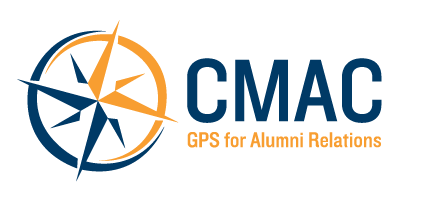Alumni Engagement and Annual Giving: Successfully Merging Teams
If you caught CMAC’s most recent articles by Ryan and Nicole (or if you’ve simply been paying close attention to the higher education landscape!), you know that the deep-seeded separation between alumni engagement and annual giving teams is becoming obsolete.
My full-time role is with the Office of Alumni Engagement and Annual Giving (OAEAG) at Syracuse University which, until May 2023, was the Office of Alumni Engagement reporting to one vice president and the Office of Philanthropic Engagement reporting to another. Having been through an integration, and now part of a team reporting to the same leader, I took some time to reflect on what's worked for us and why this move makes sense for other teams considering “two become one.”
Integration Makes Sense
“We’re talking to the same audience!” We joke that I’m going to have those words on my headstone someday. The traditional model of separate alumni engagement and annual giving teams creates artificial barriers between two departments serving the same constituents. Alumni don't view their relationship with their alma mater through departmental silos – they see ONE institution that they either feel connected to or they don't. By merging teams, we:
Create more cohesive alumni experiences that naturally blend engagement and giving opportunities.
Develop more sophisticated donor journeys that recognize the interconnectedness of engagement and philanthropy.
Eliminate redundant outreach efforts and mixed messaging.
Better leverage data and insights across both functional areas.
Streamline resources and, ideally, reduce operational costs.
How to Integrate Successfully
Start with STRATEGY. What metrics will define success for your merged team? How will you measure both engagement and giving in an integrated way that makes everyone feel as though their work matters? CASE’s model (Philanthropic, Volunteer, Experiential and Communications) offers the framework, but your goal will be to make it work for your institution (CMAC can help).
At Syracuse, we integrated at the same time we were concluding our Forever Orange Campaign, which had a donor, dollars and engagement goal. Knowing that both giving AND engagement mattered when it came to meeting our campaign goals helped all of us to feel seen and part of the goal attaining process.
Align team structure. Roles must blend engagement and giving responsibilities. Otherwise, you’ll remain two teams that report to the same leader, as opposed to one integrated team.
This remains an opportunity for us at Syracuse. My more traditional engagement communications role has shifted to one that is focused on dot-connecting and identifying programmatic opportunities that have a strong philanthropic connection. Additionally, those on our team in a supervisory role meet every two weeks (and more often if needed) to spell out opportunities for collaboration.
Even if you can’t change position descriptions, you should ensure that everyone knows each other’s roles. Many of us who came from alumni engagement had a lot to learn about the annual giving cycle, and vice versa. Devote team meetings or other opportunities to this type of professional development.
Develop integrated programming. Design events and initiatives that naturally combine engagement and giving opportunities. This could include: peer-to-peer fundraising initiatives, an ask incorporated into every in-person program, etc.
As one example, we recently held a Zoom program with an alumna who creates nutrition programs for Olympic athletes. When attendees signed up, they had an opportunity to make a gift (as they do for every one of our programs). Our moderator opened the program discussing opportunities to support SU’s nutrition program. And when we sent out the Zoom recording, we included another ask for that particular fund.
We also have ONE master shared calendar to track emails going out, social media content, call center activity and more. Seeing it all “big picture” helps identify opportunities for synergy.
Unify data and metrics. As I mentioned in point #1, CASE makes this easy. Create a scoring system that considers both engagement and giving behaviors to better understand and segment your alumni population. Look at event participation, volunteer service, giving history, digital engagement, etc.
We meet monthly with our partners across schools, colleges and units and share an infographic about our successes from the past month. As we continue to fully integrate, we’re looking at how to build out that infographic to include both engagement and giving metrics, to show the full scope of our work.
To sum it up...
Merging is a major exercise in change management.
Provide comprehensive training to help team members develop new skills and understand concepts (LYBUNTs, CYE, acquisition) that may not be familiar to them.
Create clear communication channels between previously separate teams.
Establish new processes that support integrated work.
Develop metrics that recognize both engagement and giving successes.
Foster a culture that values both relationship building AND fundraising equally.
When done thoughtfully, merging alumni engagement and annual giving can and WILL lead to stronger alumni connections and more sustainable giving programs.
I'd love to hear your experiences merging engagement and giving shops. What's worked? What hasn't? Leave us a comment!
Kim Infanti is CMAC's Digital Growth Strategist, creating CMAC emails and growing our LinkedIn community through engaging, relevant content. She works full-time as executive director of Syracuse University's Office of Alumni Engagement and Annual Giving.








